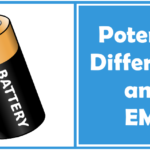There’s a new substance taking the renewable energy world by storm, and it’s been hiding in plain sight. Titanium dioxide (TiO2) is a white powder found in sunscreen, cosmetics, and toothpaste. But it turns out it has more use than whitening teeth and protecting your skin from UV rays.
Scientists in Melbourne, Australia, have discovered its ability to store renewable energy, and it works by storing renewable energy, such as solar energy, into capacitors. This means that integrating renewable energy into existing electric grids has become a possibility.
Beyond titanium dioxide, regular titanium has a purpose in the renewable energy world, too. It’s projected that by 2050, 64% of available titanium will be used by different power plants that supply geothermal energy. Moving forward, it’s clear that titanium will play a significant role in eco-friendly forms of energy.
Incredibly Efficient and Resilient Solar Panels
Titanium is used to create perovskite solar cells. These are low-cost solar cells that only take a small amount of titanium to produce. They’re highly efficient, and are set to outperform all other solar cells on the market.
At Tokai University, Japanese researchers created perovskite solar cells with an efficiency of 16.8%. That’s the highest efficiency rating ever recorded, as most cells peak at 15%. They achieved such efficiency by coating their solar cells in titanium oxide. Luckily, this substance is readily available in nature, unlike traditional titanium. Perovskite solar cells are effortless to scale and cost less than other solar cells. They’re also lightweight, flexible, and durable.
Using Titanium to Extract Power from Sea Water
In Hawaii, Makai has an OTEC heat engine that uses seawater to generate electricity. This engine converts large amounts of solar energy stored in the oceans into electricity. To do so, it draws in warm seawater and heats liquid ammonia in its system, and that spins into a turbine that creates electricity. The machine requires metal pipes that can reach 3,000 feet into the ocean to achieve this.
As most metals erode when submerged in saltwater, it’s imperative to find the right one that will keep the engine working. That’s where titanium comes into the picture. Titanium is essentially corrosion-proof, even in the saltiest of waters. That makes it the perfect material for the OTEC seawater heat engine pipes. These pipes are costly, as it takes a large amount of titanium to produce them, and the material is scarce in nature. Organizations that are dedicated to clean energy, such as Makai, should make it a point to look for reputable titanium suppliers to ensure that they can get pipes made of pure titanium. Doing so also ensures that they get the best price for them.
Solar Cells That Thrive Off Bacteria
Titanium dioxide can also be used to enhance bacteria-powered solar cells. These are low-cost solar cells that use dye-producing bacteria as a power source. These solar cells are particularly promising as they work just as well during overcast days as they do during full sunlight. They contain a safe strain of E. coli that harvests light and converts it into energy. Coating these cells with titanium dioxide boosts their efficiency significantly, just as it did with the perovskite cells.
Titanium is a compelling and resistant material – and it can be used in different ways in the renewable energy world. From harvesting energy out of seawater to coating solar cells to boost efficiency, titanium is a very versatile element. We’re sure to see more use cases of titanium bolstering the renewable energy market in the future.




Comments are closed.